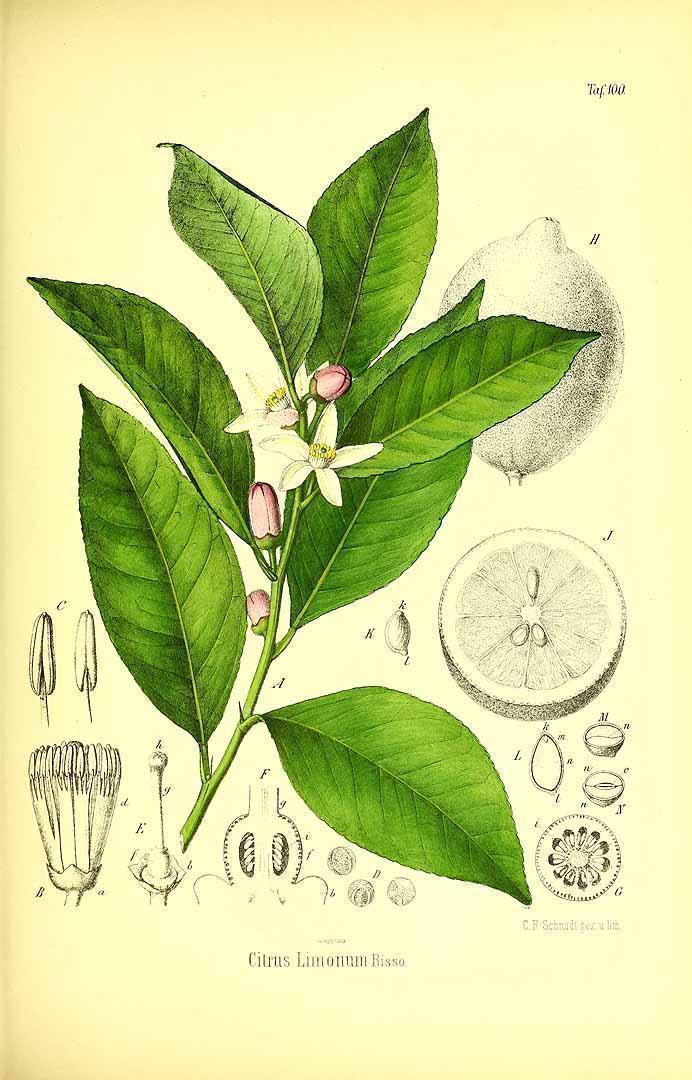Citrus limon (L.) Osbeck
RutaceaeSe dice que el limonero, árbol frutal originario de Oriente, fue traído al ámbito mediterráneo por Alejandro Magno durante sus conquistas por Persia y la India en el siglo IV a.C. Los romanos ya lo conocieron: aparece representado en las paredes de algunas de las ricas casas de Pompeya. El fruto, el limón, dado su color, también podría identificarse con las famosas manzanas de oro de las Hespérides. Su implantación definitiva en Europa, como la de otros cítricos, se debe a la labor de los árabes, que extenderían sus cultivos en huertas y jardines por todo al-Andalus. Las Cruzadas también ayudaron a que el limonero se trajera al ámbito cristiano medieval. Su presencia es frecuente en lugares soleados de conventos al asociarse la imagen del limonero a la de la Virgen María. En el siglo XVI crecían en los jardines del Real Alcázar limoneros dulces y agrios, plantados en el Jardín del Cidral. En el Viaje de Cosme de Médicis por España y Portugal, de 1669, el cronista que relata el periplo del príncipe toscano se detiene a admirar la vegetación: la gran maravilla de estos jardines fue no obstante para nosotros la de encontrarnos un día de diciembre los limoneros cubiertos de flores… Se sabe que al arquitecto Vermondo Resta, quien llevó a cabo gran parte de la reforma de los jardines a comienzos del XVII, encargado de construir la Galería del Grutesco, se le daban todos los días naranjas y limones y flores de temporada de las huertas del Alcázar. Éstas eran algunas de las mercedes de las que gozaba Resta como maestro mayor del palacio sevillano.
Procedencia
Oriental/AsiáticoCalendario
Hábitat
Morfología
 Árbol
Árbol
 Ovoidal
Ovoidal
 Simple
Simple
 Elíptica
Elíptica
 Alterna
Alterna
 Denticulado
Denticulado
 Entero
Entero
 Cuneada
Cuneada
 Acuminado
Acuminado
 Agudo
Agudo
 Perenne
Perenne
